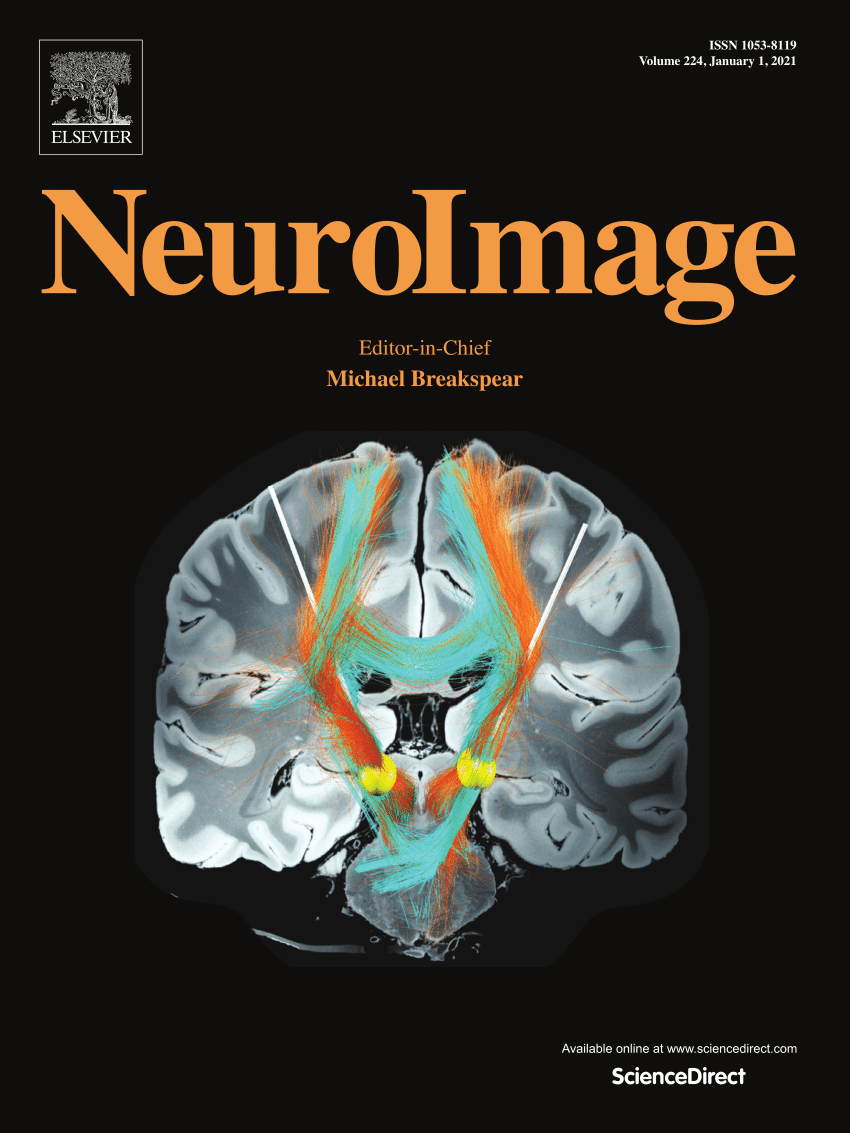A CVAE-based generative model for generalized B1 inhomogeneity corrected chemical exchange saturation transfer MRI at 5 T
IF 4.7
2区 医学
Q1 NEUROIMAGING
引用次数: 0
Abstract
Chemical exchange saturation transfer (CEST) magnetic resonance imaging (MRI) has emerged as a powerful tool to image endogenous or exogenous macromolecules. CEST contrast highly depends on radiofrequency irradiation level. Spatial inhomogeneity of field would bias CEST measurement. Conventional interpolation-based correction method required CEST dataset acquisition under multiple levels, substantially prolonging scan time. The recently proposed supervised deep learning approach reconstructed inhomogeneity corrected CEST effect at the identical as of the training data, hindering its generalization to other levels. In this study, we proposed a Conditional Variational Autoencoder (CVAE)-based generative model to generate inhomogeneity corrected Z spectra from single CEST acquisition. The model was trained from pixel-wise source–target paired Z spectra under multiple with target as a conditional variable. Numerical simulation and healthy human brain imaging at 5 T were respectively performed to evaluate the performance of proposed model in inhomogeneity corrected CEST MRI. Results showed that the generated -corrected Z spectra agreed well with the reference averaged from regions with subtle inhomogeneity. Moreover, the performance of the proposed model in correcting inhomogeneity in APT CEST effect, as measured by both and at 3.5 ppm, were superior over conventional Z/contrast--interpolation and other deep learning methods, especially when target were not included in sampling or training dataset. In summary, the proposed model allows generalized inhomogeneity correction, benefiting quantitative CEST MRI in clinical routines.

基于cvae的广义B1非均匀性校正化学交换饱和转移MRI 5 T生成模型
化学交换饱和转移(CEST)磁共振成像(MRI)已成为内源性或外源性大分子成像的有力工具。CEST对比度高度依赖于射频辐照B1水平。B1场的空间不均匀性会影响CEST的测量。传统的基于插值的B1校正方法需要在多个B1级下获取CEST数据集,大大延长了扫描时间。最近提出的有监督深度学习方法在与训练数据相同的B1上重构了B1非同质性,纠正了CEST效应,阻碍了其推广到其他B1水平。在这项研究中,我们提出了一种基于条件变分自编码器(CVAE)的生成模型,用于从单次CEST采集中生成B1非均匀性校正的Z谱。该模型以目标B1为条件变量,从多个B1条件下的逐像素源-目标配对Z光谱进行训练。分别进行数值模拟和5 T健康人脑成像,以评估所提出的模型在B1非均匀性校正CEST MRI上的性能。结果表明,生成的B1校正后的Z谱与B1不均匀区域的参考平均值吻合较好。此外,MTRasym和MTRRex在3.5 ppm下测量的APT CEST效应B1不均匀性的修正性能优于传统的Z/对比度B1插值和其他深度学习方法,特别是当目标B1未包含在采样或训练数据集中时。总之,所提出的模型允许广义的B1不均匀性校正,有利于临床常规的定量CEST MRI。
本文章由计算机程序翻译,如有差异,请以英文原文为准。
求助全文
约1分钟内获得全文
求助全文
来源期刊

NeuroImage
医学-核医学
CiteScore
11.30
自引率
10.50%
发文量
809
审稿时长
63 days
期刊介绍:
NeuroImage, a Journal of Brain Function provides a vehicle for communicating important advances in acquiring, analyzing, and modelling neuroimaging data and in applying these techniques to the study of structure-function and brain-behavior relationships. Though the emphasis is on the macroscopic level of human brain organization, meso-and microscopic neuroimaging across all species will be considered if informative for understanding the aforementioned relationships.
 求助内容:
求助内容: 应助结果提醒方式:
应助结果提醒方式:


